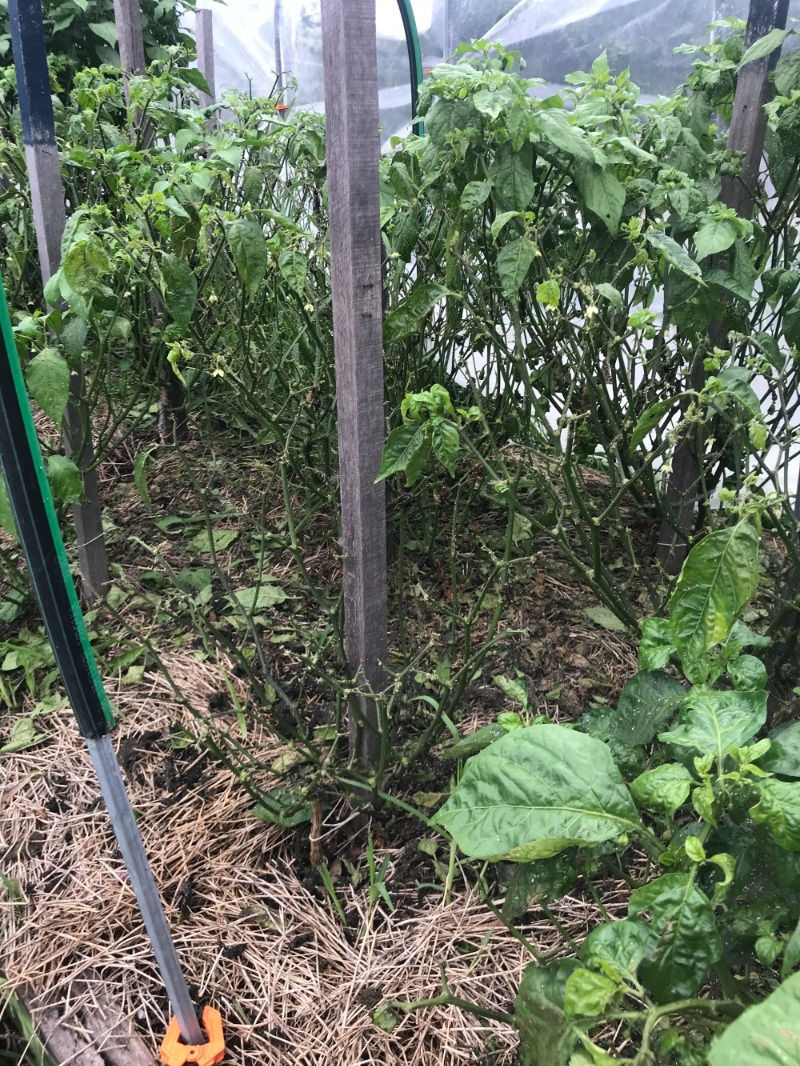The Ladybug - she's a ferocious killer
- susanporter41
- Jun 12, 2021
- 4 min read

For me ladybugs were a symbol of lazy summer days as a child in the garden. Not anymore! Now I see them as the ravenous natural born killers they are – and I love them for it.
With a cool Summer/Autumn, this year all my chillis were either under plastic or in the greenhouse. These warm humid conditions led to an aphid infestation of biblical proportions. You may ask what’s so bad about aphids? Well left unchecked they can do untold damage to the chilli crop. They basically suck the life out of the new growth and buds which form into fruit. Another problem is that they form a symbiotic relationship with ants. They excrete a nectar the ants love, and in return the ants attack eat the eggs and lavae of beneficial insects. Eventually this leads to sooty mould which can kill your plants.

Now it’s not so hard to spray a plant or two, but I have over 350 plants and there was no way I could keep on top of that. Especially when aphids hide under leaves making it almost impossible to get all of them. I tried organic sprays. Firstly pyrethrum is too harsh, soap based sprays don’t last long enough and you can only spray a couple of times within a defined period. Here’s a picture of a poor plant I didn’t get to until it was too late. They decimated him and he never produced fruit all year. The aphids were winning this battle and I was pulling my hair out.
But one sunny spell I put all my plants from my greenhouse out to spray the aphids off (again) and left them out for the day. When I came back I counted over 50 ladybugs on 27 plants, and after 3 days 75% of all aphids were gone, even under the leaves. Not only that, they had started laying eggs guaranteeing me more ladybugs soon. It was then I saw the potential of these little insects and knew I needed to get as many into my chilli patch as possible - and fast. That was the only way I was going to save the crop. And that’s when my summer obsession started.

But how? Firstly, I bought a couples of patches of ‘Predalure’ which is a pheromone that attracts ladybugs. I’m not sure how effective they are, but I figured it couldn’t hurt. Then I bought 100 ladybug lavae and spent days watching them hatch and then very carefully manually transferring each one onto the plants with a paint brush. I’m not naturally a patient woman, next time if I was buying I'd buy the lavae themselves. Then I spent days watching them grow and finally start attacking the aphids. I even used to get mating ladybugs and transfer them into the greenhouse to make sure they laid they’re eggs directly in the greenhouse so I had a greater chance they would stay. In the end I had them everywhere. If I found one somewhere it shouldn’t be, I gave it a lift back to a heavily infested plant and they’d get straight back to work. They came from who knows where and helped keep the aphids under control. I’m eternally grateful. And if it sounds like I was a crazy lady you’d be right. I was more than a little obsessed.
Then I started to really watch and learn about ladybugs. In fact, ladybugs, like a butterfly, go through a transformation from prehistoric looking lavae through to the ladybug we all now and love. Here are some photos I took at their various stages.

These are the ladybug eggs.

This is a ladybug lavae. They look like little crocodile. It's at this stage that they are best for dealing with aphids for three reasons:
1. This is when they are hungriest.
2. They can't fly away.
3. They grow to about 8mm and are too big for the ants.

This is when they go into the chrysalis and change into the ladybug. You can see the spots starting to form. They are stuck on pretty tight.

This is a fully fledged ladybug eating an aphid. Sorry for the bad photo, but it was hard to get in close enough as they keep moving.

I also needed to deal with the ant problem so the lavae had a chance of surviving when they hatched. Apart from denying them of a food source, I found natural solution that worked a treat. Borax, sugar and water on a cottonwool pad and whamo, goodbye ants. The good thing is they take it back to their nest and kill the Queen. Give it a go.
Now, each year I will be doing my utmost to make sure I have more plants in my chilli patch that will attract and keep my ladybugs happy. Flowers like Marigolds, Calendula and Sweet Alyssum are ideal.
So put away those chemical sprays and even some of the organic ones too my friends. If I had persevered with these, I may never have found my ladybug soliders which work much better and are certainly more enjoyable.
Once again MotherNature has the solution if you only take the time to look.





Effective ant removal Vancouver solutions available. Book your service now!